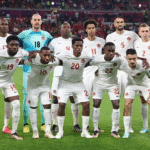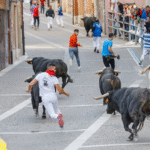Today, many international brands view events in Latin America as a quick way to gain visibility. However, many overlook the importance of understanding local culture, pride and community. True connection demands a deep understanding of customs and values, which makes all the difference between making a lasting impact and being forgotten.
- The Cultural Pulse of Latin America: Mastering Local Dynamics for Event Success in the Region
- Navigating Regional Differences to Host Events in Latin America: One Size Does Not Fit All
- Success Stories in Latin American Events
- International Brands That Thrived
- ● Mercado Libre’s Local Market Engagement in Argentina
- ● Nike’s Community Sports Initiatives in Brazil
- ● Ford’s Community Car Clinics in Colombia
- Lessons from Failure
- Actionable Strategies for Building Genuine Event Presence
- Unlocking the Power of Local Events in Latin America
This cultural playbook offers key insights into how global brands can craft memorable event strategies. Counting on events services in Latin America can be a game-changer, helping brands navigate regional complexities. The goal is to create authentic, emotionally charged experiences that foster trust and brand loyalty.
In this article, we’ll explore the cultural dynamics that shape events in Latin America, examine key regional differences, share success and failure case studies, and offer practical strategies. These tips are designed to help brands build genuine connections through local experiences and expert event services, respecting regional diversity.
The Cultural Pulse of Latin America: Mastering Local Dynamics for Event Success in the Region
Latin America’s rich cultural diversity shapes how communities engage with events. Traditions, norms and regional identities influence what audiences value most. For brands, understanding these dynamics is key to creating authentic connections, not just hosting generic events.
Recognizing regional differences helps build genuine engagement across borders. When planning events in Latin America, embracing local customs and values creates authentic experiences that resonate. This builds trust, loyalty, and shows genuine respect for regional differences.
The Heartbeat of Local Culture: Emotions, Heritage and Community
At the heart of Latin American culture is a deep sense of community and celebration. Events like Carnival in Brazil or Día de los Muertos in Mexico are more than just festivities, they are expressions of identity woven into everyday life. Brands must focus on building emotional connections through experiences that evoke passion, pride and tradition.
Authentic interactions are key. Creating lively, heartfelt atmospheres that showcase local folklore and symbols helps transform audiences from spectators into loyal participants. These genuine experiences resonate on a personal level and strengthen emotional bonds with the community.
Community involvement is essential for success. Most local events thrive on active participation, and brands that attempt to impose a distant, transactional presence risk rejection. Instead, partnering with communities and supporting regional causes fosters trust and long-term loyalty in this close-knit region.
Why Cultural Authenticity Matters More Than Ever
In Latin America, emotional connection and authenticity are key drivers of successful engagement. Consumers respond best to experiences that showcase their regional pride, heritage and social values. When brands take the time to understand and incorporate local traditions, they demonstrate respect and genuine interest-traits highly valued in the region.
Authentic, culturally sensitive experiences foster trust and loyalty. Brands that reflect the true spirit of local communities create deeper emotional bonds, turning passive spectators into active participants. This approach helps establish a meaningful presence that resonates well beyond the event itself.
Navigating Regional Differences to Host Events in Latin America: One Size Does Not Fit All
Latin America’s diversity extends beyond culture; it’s visible in how each city approaches events. What works in Buenos Aires (European influences, a sophisticated arts scene and a vibrant café culture) may not apply in Lima or Bogotá. Each city has its own pulse, shaped by history, demographics and social values.
Tailored Strategies for Key Cities
- Buenos Aires is shaped by European influences and a vibrant café, arts and music scene. To connect with locals, brands can incorporate artistic elements, creating engaging, memorable experiences aligned with the city’s creative vibe.
- Lima’s history features indigenous roots and colonial influences. Successful events highlight local food, crafts and traditions, fostering pride and strong community ties.
- Bogotá’s vibrant, youthful scene thrives on social initiatives, local causes and music. Engaging local artists and community projects boosts participation and builds loyalty. Recognizing these regional differences is key for brands to succeed across Latin America.
By understanding and adapting to these regional differences, brands can create more meaningful, engaging experiences that resonate deeply with local audiences. This tailored approach not only drives participation but also builds lasting loyalty across diverse Latin American cities.
Success Stories in Latin American Events
Many international brands have successfully connected with local communities by respecting regional traditions, partnering with influencers, and creating relevant experiences. Those that overlook cultural nuances risk poor reception and damage to their reputation.
Here are some inspiring examples of brands that thrived as well as lessons learned from failures:
International Brands That Thrived
● Mercado Libre’s Local Market Engagement in Argentina
MercadoLibre tailored its product launch events to reflect local shopping habits and cultural preferences. They collaborated with local influencers and incorporated regional music and cuisine, creating a festive atmosphere that resonated deeply. This authentic approach significantly increased user engagement and brand loyalty in Argentina.
● Nike’s Community Sports Initiatives in Brazil
Nike partnered with local athletes and community groups to promote sports events. They co-created programs that celebrated regional talent, integrating local music and food. This genuine engagement boosted brand loyalty and increased sales in Latin America.
● Ford’s Community Car Clinics in Colombia
Ford organized community-focused vehicle maintenance events in Colombia, partnering with local mechanics and community leaders. They highlighted regional transportation needs and provided free services. This hands-on, relevant engagement built trust within local communities, boosting brand reputation and market share.
Lessons from Failure
● A Global Beverage Brand’s Generic Campaign in Peru
A major soft drink company launched a campaign that used one-size-fits-all messaging across Latin America, including Peru. Lack of localization and cultural relevance led to poor consumer reception, demonstrating that ignoring regional differences diminishes impact and consumer trust.
● Misunderstanding Cultural Norms in Venezuela
A fashion brand failed to adapt its messaging to local customs, inadvertently offending audiences. The mistake damaged credibility and highlighted the importance of cultural sensitivity.
Actionable Strategies for Building Genuine Event Presence
To truly connect with Latin American audiences, brands need a strategic, culturally sensitive approach.
- Partnering with local artists, musicians and influencers helps co-create authentic events that showcase regional talent and build community pride, boosting brand credibility.
- Championing regional causes like local holidays or social initiatives to build trust and emotional bonds.
- Using local language and culture in your messaging, and hosting workshops to deepen understanding and boost your brand’s reputation.
- Tailoring your approach to local preferences, like hosting events on weekends when families are available.
- Partnering with local event services to navigate regional logistics and media.
- Using social media platforms like WhatsApp, Instagram and Facebook for informal engagement live streams and messaging can expand your event’s reach and impact.
Navigating the Media Landscape for Effective Press Release Distribution
While hosting local events is fundamental, effectively distributing news about these initiatives is equally crucial. The media landscape in Latin America is highly fragmented, with practices varying from country to country.
Challenges in Latin American Media
- Diverse outlets: national newspapers, regional outlets and digital grassroots publications.
- Cultural nuances: understanding local journalistic priorities.
- Digital variations: different levels of online penetration and social media use.
Best Practices for Press Release Distribution
- Localizing press releases: translate and culturally adapt content.
- Using regional media contacts: build relationships with journalists.
- Incorporating social media and WhatsApp channels for informal outreach.
- Choosing distribution timing carefully, considering local holidays or significant dates.
Unlocking the Power of Local Events in Latin America
In conclusion, understanding local culture is key for brands to make a lasting impact. Authentic experience partnering with local artists, supporting regional causes and using native language builds trust and loyalty. Genuine engagement turns audiences into active participants, making events a strong growth tool.
Each city has its own vibe. Partnering with events services in Latin America helps navigate local logistics and culture. Respecting regional differences creates memorable experiences that foster loyalty across the region.














